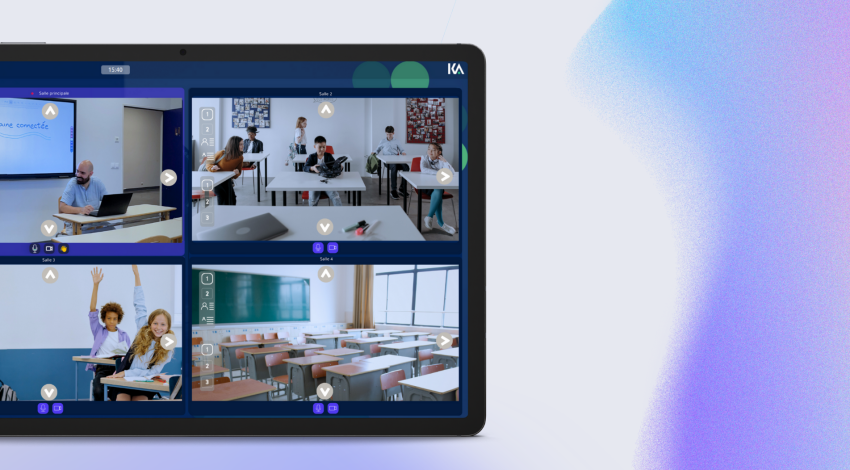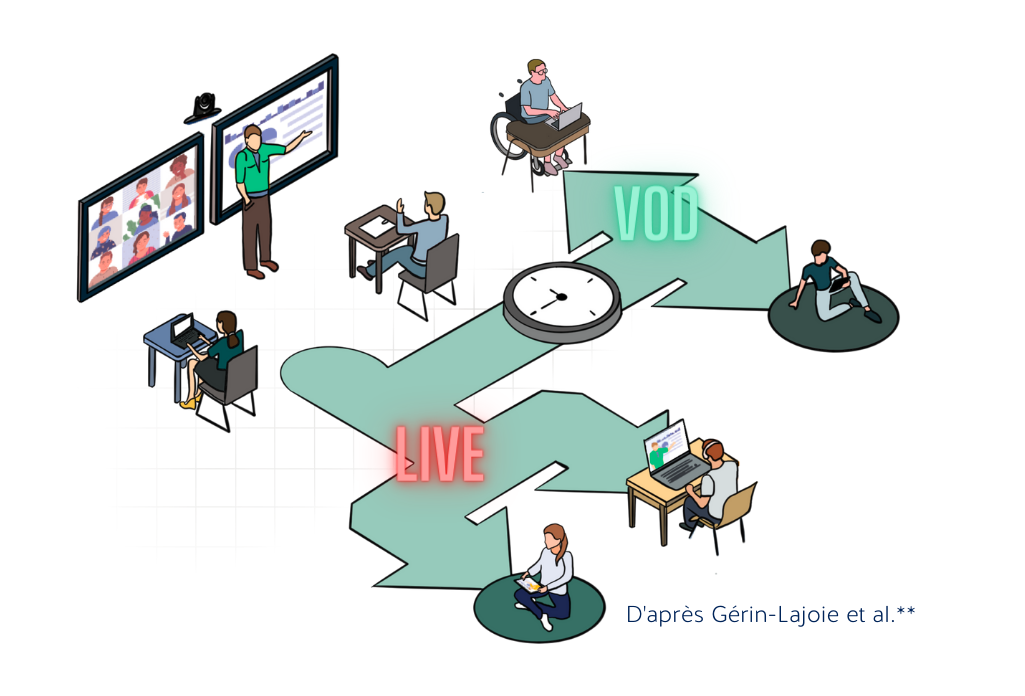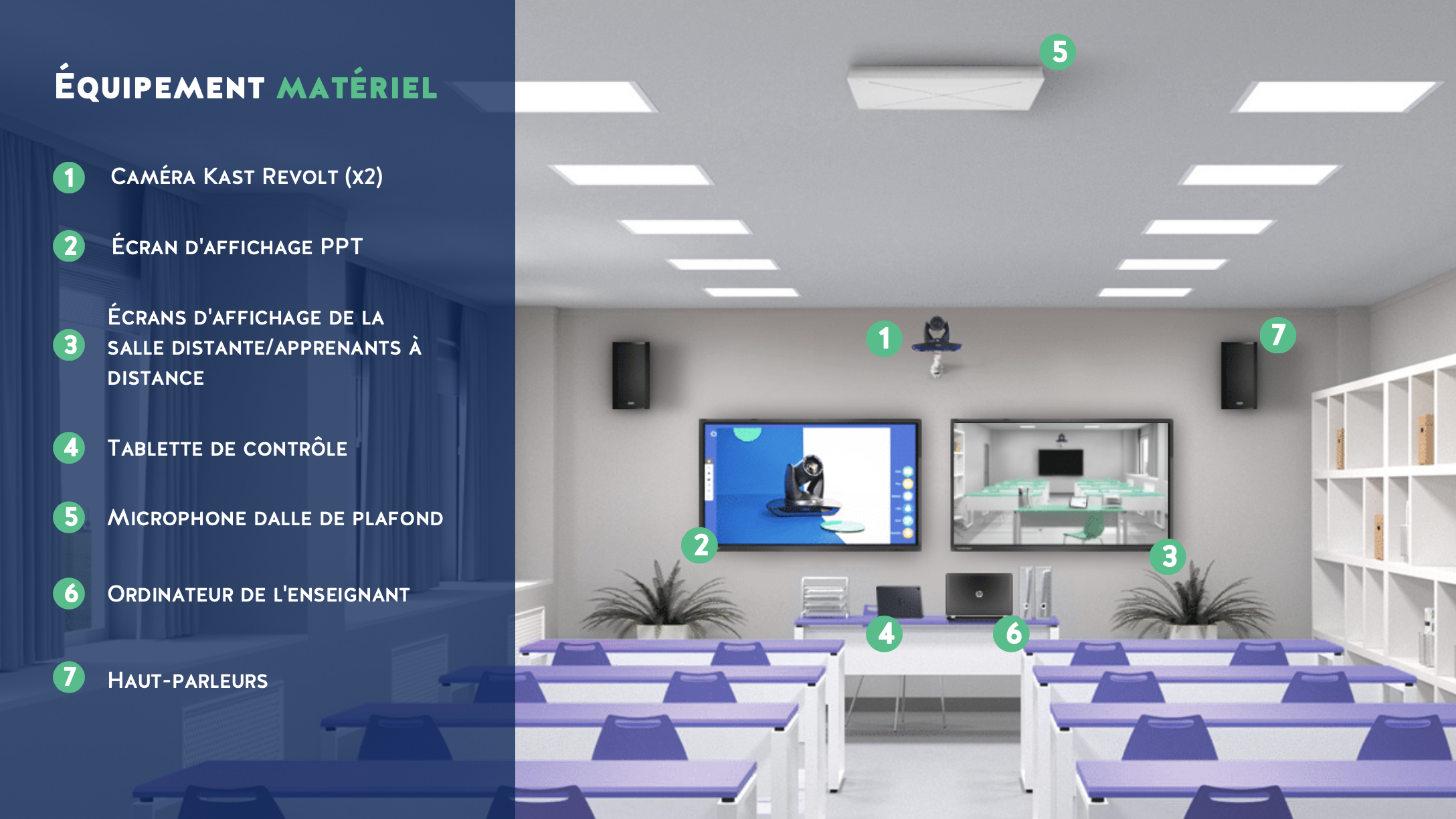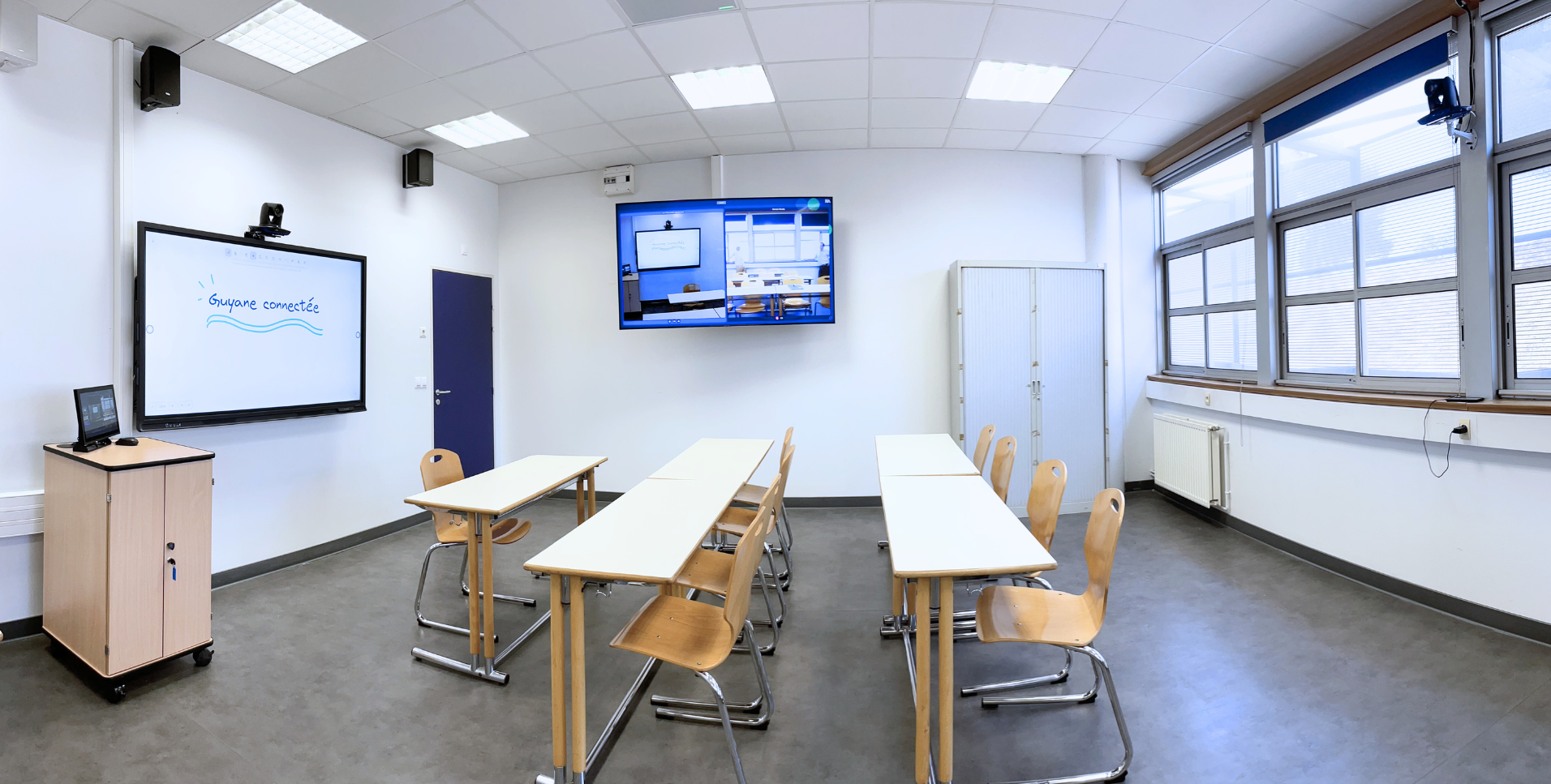

Kalyzée has envisioned the ideal hybrid classroom for you. A room equipped with audiovisual equipment, designed for its simplicity and complete immersion of remote learners. This classroom allows you to connect to another physical room or a virtual classroom to deliver live or recorded classes.
This room has been conceived by academics, for academics, and is designed for delivering lectures, tutorials, and even interactive practical sessions. Moreover, the model is replicable in schools or training centers.
Hybrid teaching is a training activity that combines in-person and remote modes simultaneously. The hybrid course offers students the opportunity to attend the class in person or engage in equivalent remote training activities synchronously or asynchronously during each weekly session.
The equipment of the ideal hybrid room described below takes into account the different needs of all stakeholders. We drew inspiration from the review of Gérin-Lajoie et al.* which summarizes more than 10 years of R&D on the subject of distance learning.
In the ideal hybrid room, we recommend:
The first one films the professor, the second one films the students present in the room. This way, remote students can see both the lecture and the remarks, questions, and interactions of the in-person students.
The interactive screen / video projector allows for annotations that will be digitally transmitted to remote learners. The quality will be higher than filming a non-digital board.
Placed on a wall or on the side of the room. It allows displaying remote learners if they choose to turn on their cameras. Two screens can be used: one at the front of the room, the other at the back.
Enabling the initiation of broadcasts or recordings, as well as camera controls if the instructor desires (e.g., displaying a closer or wider view).
This type of microphone captures all the sound in the room. These microphones provide the ability to reduce or even eliminate all background noise.
Often already present in all rooms, they are connected both to the instructor's support (which can share audio or video content) and to remote learners who can interact.
Remote students have access to a computer and a webcam.
Once all the equipment is installed in the room, it remains to make it work. We cannot emphasize it enough: simplicity is key! To connect two physical rooms or join the virtual classroom and deliver the lecture, the instructor should not need to configure or connect anything. It is thus important to have fully integrated software that automates the operation of all equipment.
The broadcast schedule is planned in advance, either by the administration in charge of schedules or by the instructor before the class. The schedule appears automatically on the room's touch screen.
Access to the virtual class must be simple and secure. A virtual class control tablet is installed in the room. It enables initiating the hybrid session with a single click through an intuitive interface.
To interact verbally with remote students, a video conferencing platform is set up. It is integrated with the room and the virtual class. This way, remote students automatically appear on the return screen in the room. If the hybrid course is broadcast to another hybrid room, the latter will appear on the return screen. Thus, remote learners, whether at home or in another room, can easily interact with the instructor.
For a comprehensive hybrid teaching approach, an asynchronous mode can be offered. In this case, the lecture is recorded and then shared with online learners. To lighten the workload of the instructor and educational engineers, this step should be automated. When scheduling the class, it's decided whether to record or not. If recording is selected, the replay is directly available in the Learning Management System (LMS), without additional publishing steps.

Hybrid room installed at INSPE Aix Marseille University
Remote students need to be immersed in the lecture. They have access to the same information as in-person learners: the lecture, presentation materials, questions asked, and their answers. Additionally, they should be able to participate in exercises and activities conducted in the classroom.
Keywords: Immersion, Interaction
The motto of the ideal hybrid room is simplicity. Overloading the instructor should be avoided at all costs. The instructor should be able to focus on the course content rather than its setup. The goal is to deliver quality to the learner and simplicity to the instructor. To share the lecture remotely, the instructor will need:
Video broadcast (video conferencing or streaming),
Document sharing (drive or LMS),
Interactivity and assessment tools.
Keyword: Simplicity
Harmonizing information systems will facilitate internal course organization. If the institution's policy is clear and avoids using multiple tools, all digital content can be consolidated. This increases efficiency.
Keywords: Harmonization, Knowledge Capitalization
Technicians often need to travel to start a remote class or recording. With the ideal hybrid room, there's no need to travel. Everything can be done remotely: starting a broadcast, recording, controlling cameras, screens, and other equipment. There's also no need to set up connections before starting a session. Everything is already interconnected and functional when the instructor enters the room.
Keyword: Remote Control
The hybrid room described here is based on the review by Gérin-Lajoie et al.* which summarizes more than 10 years of R&D in the field of distance learning.
Implementing such a project is undoubtedly challenging. You can seek assistance from professionals in the field. Integrators can address your equipment needs. Additionally, you might require the domain expertise and support that Kalyzée can offer.
Kalyzée offers assistance in custom hybrid room projects based on existing tools (hardware and software). Indeed, Kalyzée integrates your existing solutions (BBB, Moodle, ESUP-POD, etc.) to build your own hybrid room. To learn more, feel free to schedule an appointment with one of our advisors.
*Sources: Hybrid Teaching, study by Teluq University (Canada), Gérin-Lajoie et al.


